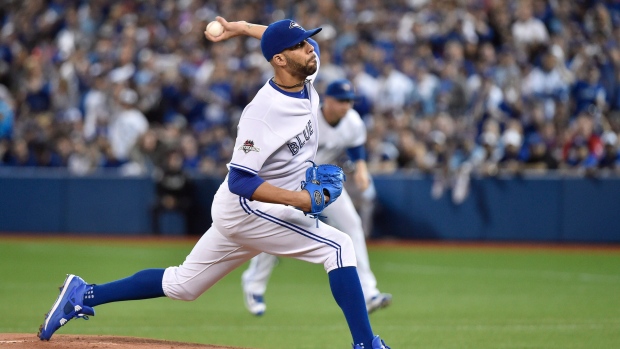Dec 2, 2015
Don't overestimate loss of Price to Red Sox
Don’t worry, Blue Jays fans, factoring David Price out of the 2016 equation isn’t going to disrupt the team's master plan. As Dirk Hayhurst writes, nor will his arrival with the rival Red Sox hurt them.

Don’t worry, Blue Jays fans, factoring David Price out of the 2016 equation isn’t going to disrupt the team's master plan. Nor will his arrival with the rival Red Sox - by way of a ludicrously expensive contract - hurt them.
While some might gripe and grumble that the Jays' player investment portfolio is once again shifting down from their high-ceiling growth, we need to understand that such an approach is fine - even necessary - if the team wants to repeat last season's success.
While many will feel it was the direct acquisition of star power that pushed them into a post-season spot last year, they forget it was the success and flexibility that made their "all-in" scenario possible.
And it will be that same flexibility that makes it possible again.
Here's what we need to remember going forward.
First, the Jays still have a tremendous offence. No team in baseball can replicate their firepower without spending a crippling amount of money to keep up. And mind you, that firepower didn't include Devon Travis and Michael Saunders during its unparalleled second-half run.
Also, pitching is expensive, but buying 100 runs in a free agent market that’s already light on power is no easy financial feat, either. And frankly, while having another ace-capable arm after Stroman is a priority, the need for that ace to be of Price’s calibre/cost is mitigated by the fact that the Jays can roll out pitchers like Drew Hutchison and still win more than they lose - thanks to their offence.
Most clubs see team needs as a series of weighted positive or negative offence, defence and pitching numbers that amount to more victories than defeats. That said, the Jays have such a positive offensive sum, all they need do is get their pitching into the 'dependable' category to stay in contention for a post-season berth.
Of course, it might be a different story in the playoffs when it’s Cy Young versus Cy Young. But this isn’t the end of the season. It’s the off-season, where paying for big names in a vacuum can prove to be as much of a liability as it is a boon. It's better for a team with a distinct league advantage to acquire value and flexibility in the off-season and keep their potential upside to deal at the trade deadline.
Second, fans will always overinflate name recognition.
Granted, David Price played a major role in helping the Jays get to the post-season, but so did another pitcher who - until this year - was so far under the radar that it took his dominance in the 2015 post-season (outshining both Price and Marcus Stroman) for fans to take notice.
And that's Marco Estrada. He was the Jays' most successful and most dependable pitcher in 2015. His cost to the club? $3.9 million. Price's salary during the same year? $19.8 million.
You’re telling me that Price was really five times better than Estrada?
Nope, he wasn’t.
But what you pay for in Price (or at least what you hope you pay for in Price) is the closest thing you can get to guaranteed results - a solid track record. Price has it, but what makes a team a contender isn’t the proven players, it’s the emerging ones. Take Estrada out of the 2015 equation and the Jays aren’t even in a position to trade for Price.
The Blue Jays are built in such a way that they can bet on mediocre or volatile talent discovering and stabilizing itself early in the season. They can then supplement it with proven talent via mid-season trades. It is after all, what Alex Anthopoulos did in 2015 - and I’d say that worked out pretty well.
The main concern is whether or not they have the prospects to do that again. And if so, is that something new management wants to do? Probably not, which is why there's such a push to acquire speculative talent on minor league deals. Expect Triple-A Buffalo to be a crowded place this season, with extra back-of-the-roster shuffling to keep tradeable chips seasoned and visible in their vault.
Finally, what makes a team compete is not purely the payroll. It's also development and luck. How many teams get hot at the right times? How many teams have massive payrolls and bomb? How many teams have the post-season blend of emerging talent, proven veterans, financial flexibility, deep reinforcements and good health?
Not many.
It's not all about money chasing talent. It's about the flexibility to acquire talent when it's needed - whether it's from inside or outside of the system. The Jays are working to retain that...and $217 million for one arm is not the way they'll make it happen.

